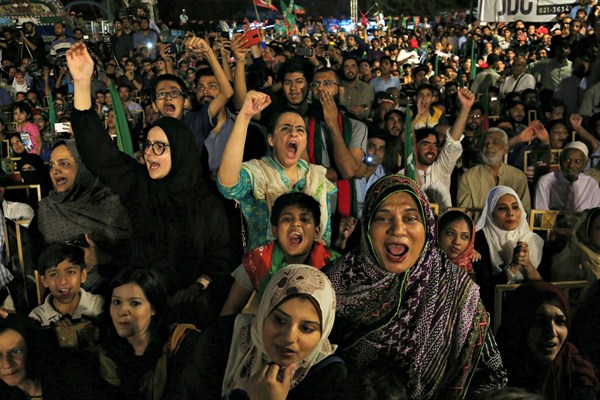Driving past the presidential palace in Islamabad these days, one is confronted by the sight of cargo containers haphazardly lying around its perimeter, looking like a child’s forgotten toy blocks. But the containers, which the government uses as barricades against street protesters and other security threats, have a more serious message. They are a sign of a nation braced for unrest as political factions vie for primacy in the run-up to Pakistan’s general elections on July 25.
Pakistan’s restive capital is used to political demonstrations and even large-scale riots, many of which have recently been driven by youth organizations asserting themselves in a country where more than 60 percent of the population is under the age of 30, according to the United Nations Population Fund. Of these, 58.5 million are 20 to 24 years old, while 69 million are under the age of 15. With an overall population of nearly 208 million, Pakistan is the sixth most populous country in the world.
This youth bulge will shape a lot of things for Pakistan in the near future. It could be a demographic dividend, if these millions of young Pakistanis are fully employed in productive activities, resulting in a national increase in the average income per capita. But if bleak economic prospects persist, such a large, disaffected youth population could instead be just the opposite, further threatening Pakistan’s social and political stability.

